Team-BHP
(
https://www.team-bhp.com/forum/)
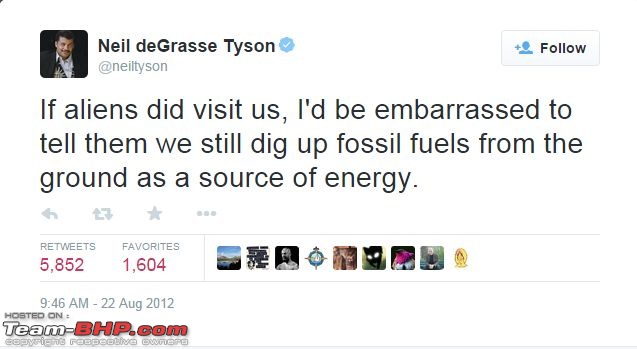
There is no denying the fact that the world runs on fossil fuels. We use them to power everything from our homes and industries...to our automobiles. Fossil fuels literally run and rule our lives. But there will come a day when we'll run out of them. The fuel we are digging from deep within our Earth is limited. Our annual consumption is estimated at over 11 billion tonnes of crude oil. It is estimated that by the year 2060, the world may run out of crude oil. In the last few decades close to its extinction, its prices will significantly spiral out of control.
A lot of time and energy is being spent to find alternatives. These alternatives are based on solar power, batteries charged from the available power grids and now, the latest entrant - Hydrogen Fuel Cells.
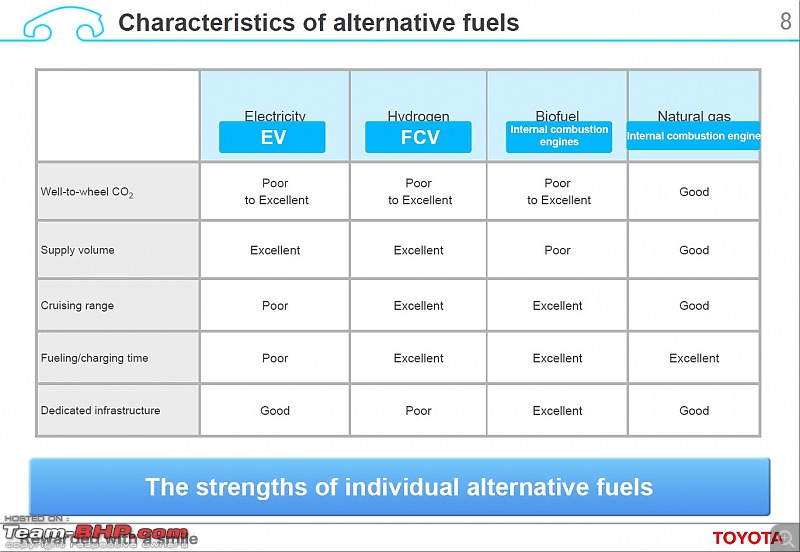
The basic premise of the Toyota Mirai is simple. Have a tank filled with hydrogen (H), take oxygen (O2) from the atmosphere and do some advanced chemistry between the two resulting in just 3 end products - electricity, heat and water.
In Greek, the word hydrogen means "water-former" because of its unique property that if you burn it, it produces water (H2O). In its monatomic form (H), it is the most abundant chemical substance in the universe, constituting roughly 75% of all baryonic mass. However, hydrogen gas is very rare in the Earth's atmosphere. It has been used for transportation in the past. The famous
Zeppelins air ships used Hydrogen till an unfortunate accident put an end to the service.
Hydrogen is quite easy to produce and while only limited retail systems exist at this point, it's only a matter of time before it is widely adopted. One of the most popular ways to produce hydrogen is to simply mix steam with methane in a process called as
Steam Reforming. Methane gas is a major component of 'gobar gas' or biogas. This ease of producing hydrogen ensures a continuous infinite supply.
The Toyota Mirai incorporates the famed Hybrid technology that has been beautifully described by Samurai in his
earlier report. But the Mirai takes a giant leap forward by abandoning the internal combustion engine and instead develops what it calls the 'Fuel Cell Vehicle' or FCV.
Sales will begin in some parts of Japan from December 15, 2014. Preparations are also under way to put the Mirai on sale in the U.S. in autumn, and in Europe by September 2015. The biggest constraint at this point is the availability of hydrogen fuel stations.
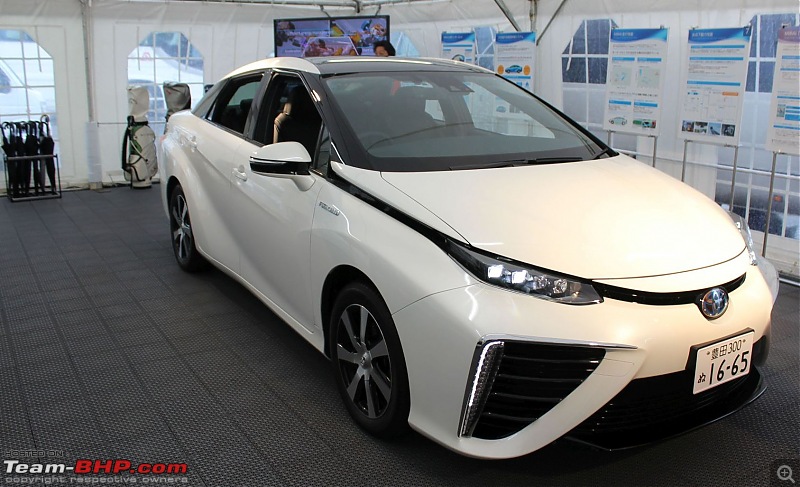
Before we get to the car, let's understand how the system works. There are two tanks with a combined capacity of 5 kilos. This gives a cruising range of almost 650 kms (
JC08 test cycle) and a hydrogen refuelling time of ~3 minutes. A kilo of hydrogen is considered as having the same range as one gallon (3.79 liters) of petrol.
The large silver box is the hybrid battery pack:
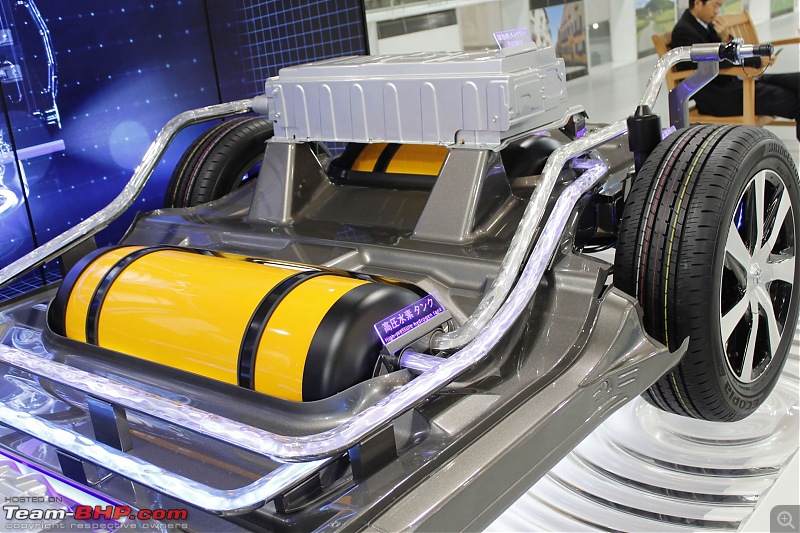
The tank has a plastic liner to seal in the hydrogen. The carbon fiber-reinforced plastic layer is to ensure pressure resistance. And finally, a glass fiber reinforced plastic layer is there to protect the surface. Toyota has used a new technology to reduce the thickness from the conventional 40mm to 25mm. This makes the tank significantly lighter:
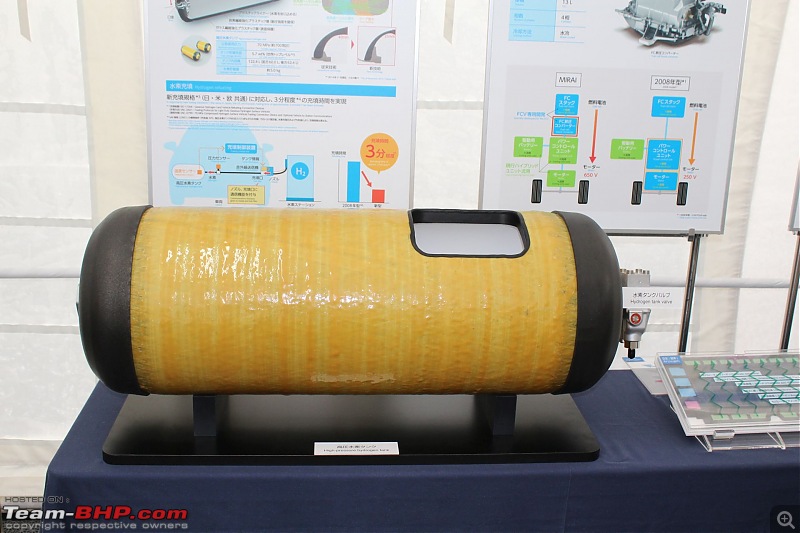

According to Toyota, the tank's storage density of 5.7 wt% is the world's best:

The car has been crash tested to check the safety of hydrogen cylinders:
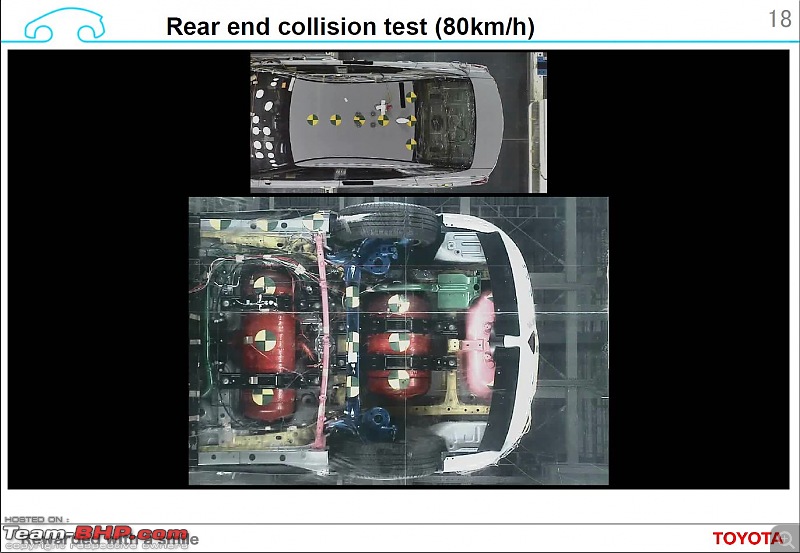
Additionally, there are hydrogen sensors that shut off the main valves in the event of a leakage:
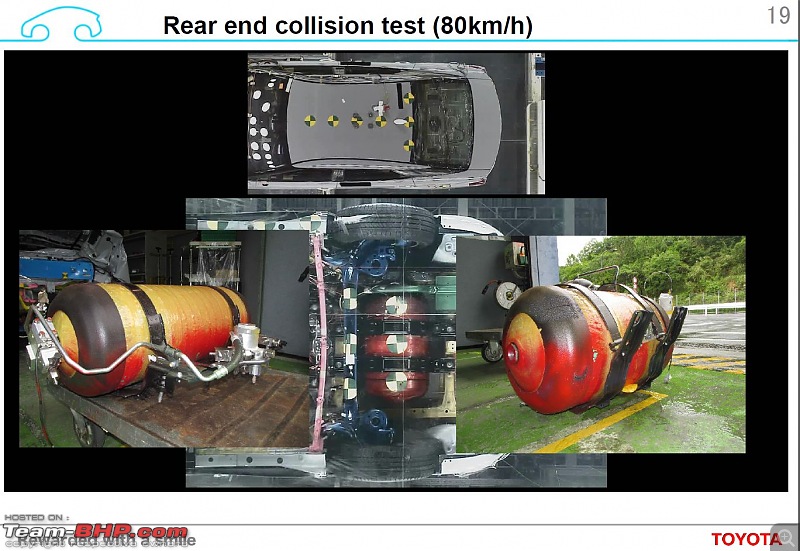
Hydrogen gas passes into the fuel cell stack:

...and then the fuel cell boost converter:

After which, it gets into the Engine Control Unit on the top and electricity is generated. The electricity runs the motor at the bottom. This is a FWD vehicle. Energy from braking gets stored in the hybrid battery pack at the rear of the vehicle:
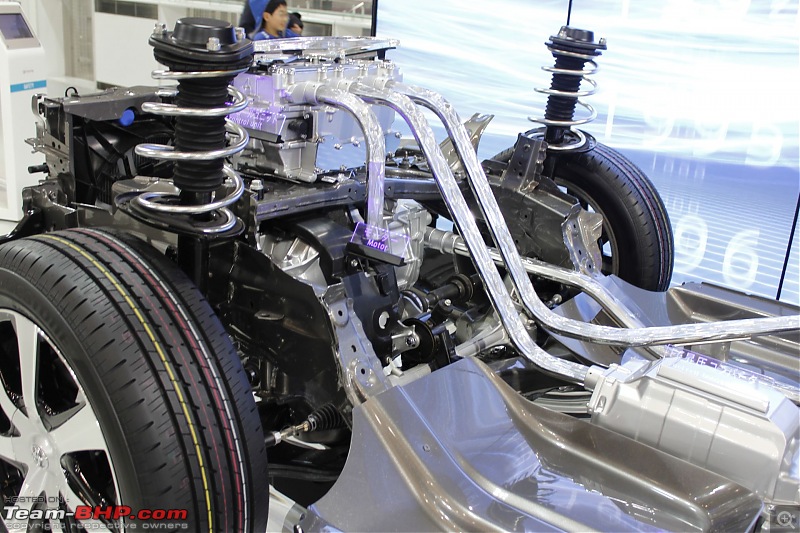
It's a tight fit inside the engine bay:
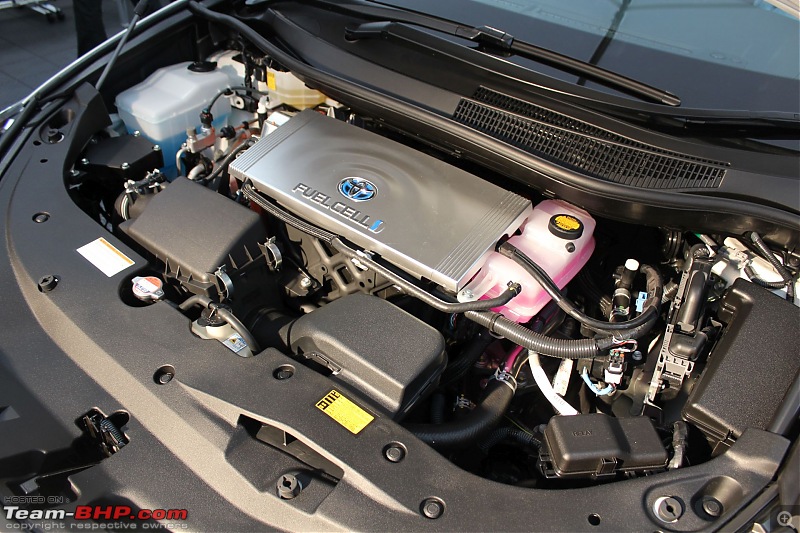
The air intakes suck in oxygen for mixing with hydrogen. The FCV also needs a couple of large radiators to keep temperatures low:

A lot of research & innovation has gone into reducing the component size, weight and cost:
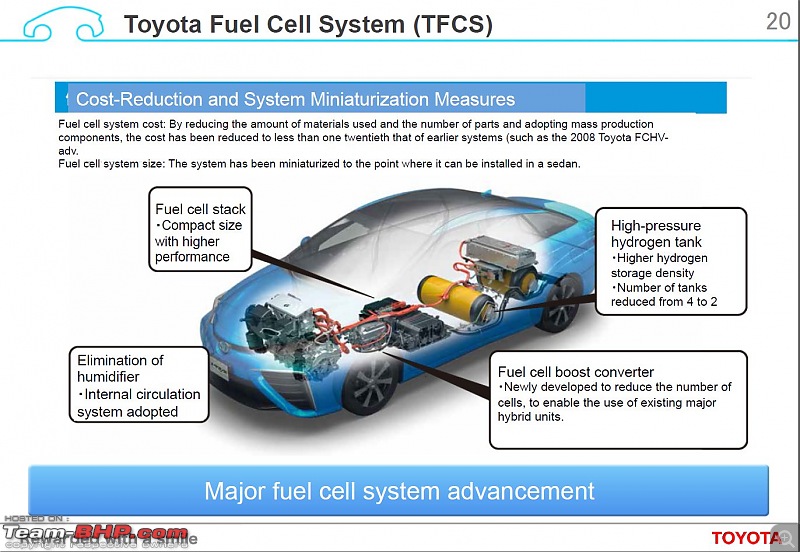
Since it's a new fuel system, Toyota is working on integrating its onboard navigation systems with fuel station availability:

Toyota uses these toys to explain the technology. Some distilled water is added to the Hydrogen Fuelling Station. When it's switched on, you can see some bubbles rise up. That is oxygen being released. Hydrogen is stored in a small tank. You refuel the toy car by connecting the hose. Once hydrogen has been filled in the car, you use the remote to control it. What a sweet toy to have for Christmas :D
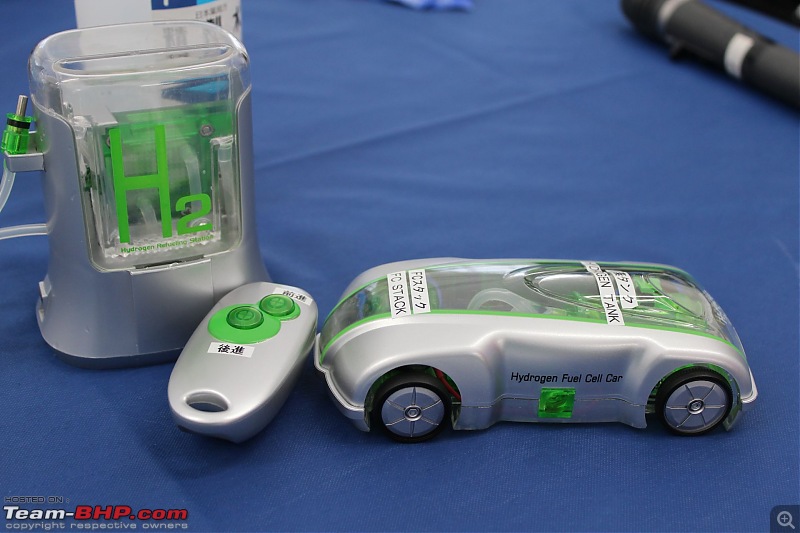 https://www.youtube.com/watch?v=dNsWfu71zdc
https://www.youtube.com/watch?v=dNsWfu71zdc
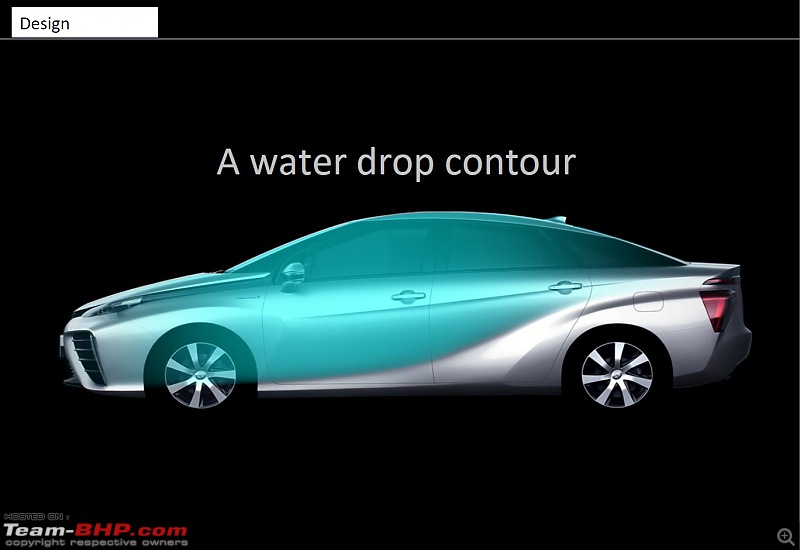
To say that the Mirai has a distinct look would be an understatement. Most people will find the front weird, although I liked it. Toyota has intentionally designed it such to keep it unique:
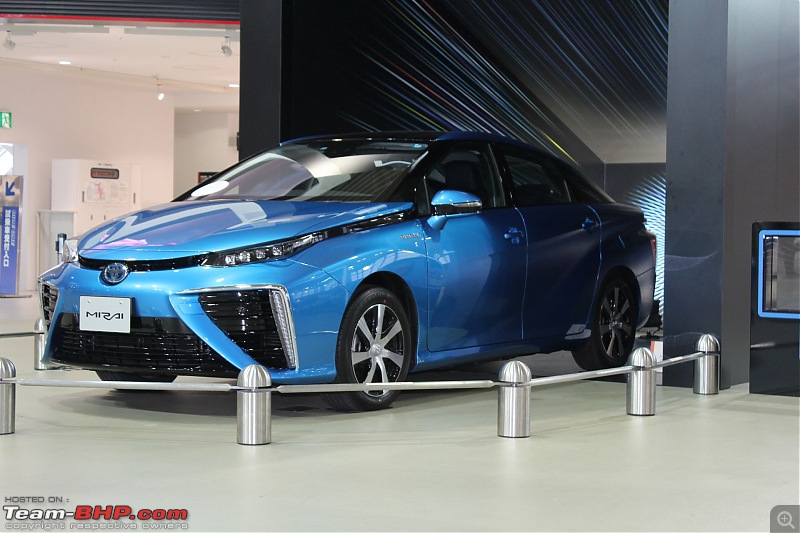
The headlights are nice. Actually, the only weird part of the design are the large grills below (more on them later):
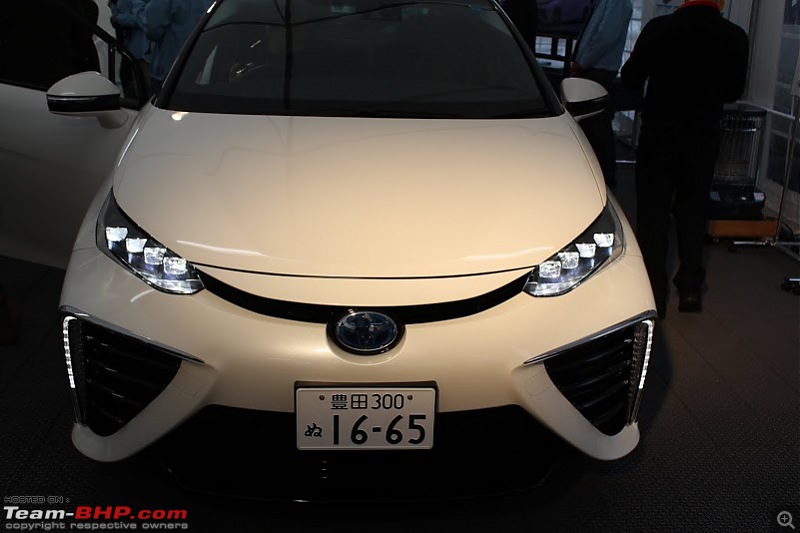
A closer shot:

Wears the Toyota logo with a blue tinge. It's the honour badge of any Toyota with hybrid tech:

The most important element of the design are these large air grills. The hydrogen engine needs air to generate electricity and keep the temperatures low. That's why the unusually big size:

You can see the crease lines in the side profile pictures:

Don't miss the 'Fuel Cell' badge:

17" aluminium alloys:

The rear end:
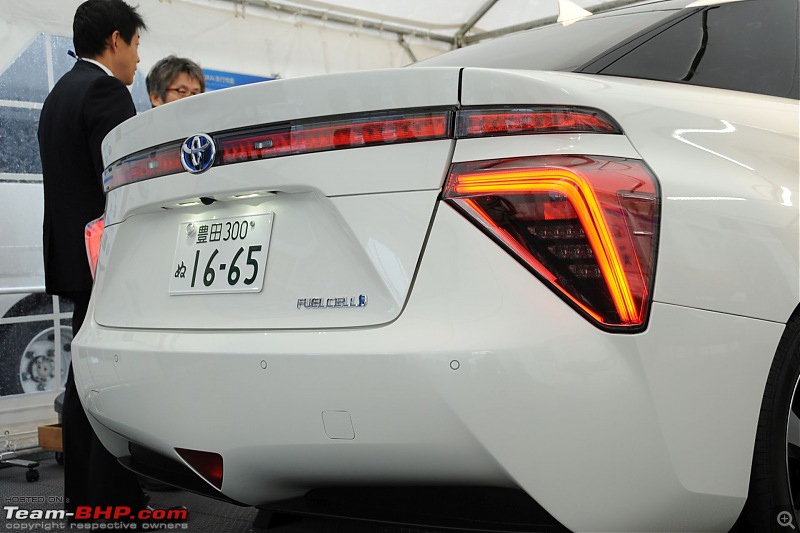

Small camera just above the number plate:
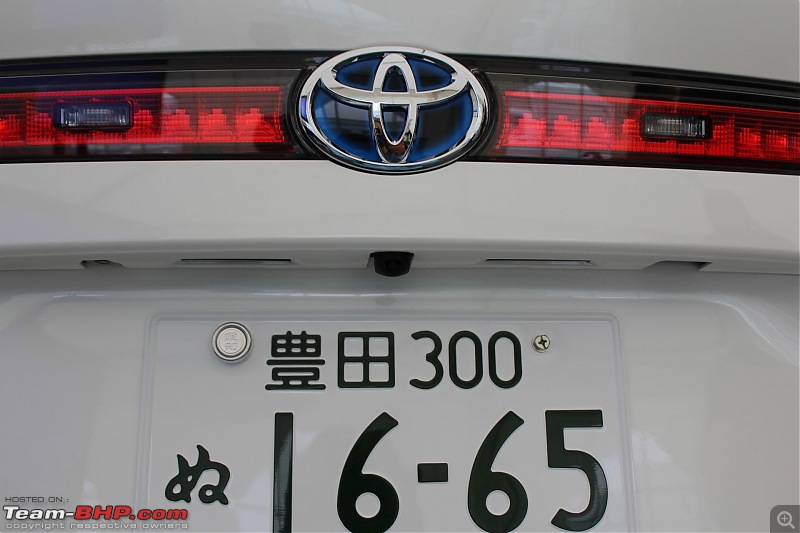
The fuelling system:

No exhaust = no pollution. The car doesn't produce any gases to need a tailpipe. The only by-product of using this car is water - pure H2O:

In the absence of an exhaust system, the underbody is closed. This has some remarkable aerodynamic benefits:

It's an expensive car based on a completely new concept. Hence, Toyota has played it safe and loaded it to the gills. There is only one variant and its top of the line. Has all the usual safety features like Airbags, ABS, Traction control etc. It also comes with heated leather seats that are very comfortable. The seats envelop you and provide excellent comfort.
The steering wheel has a couple of controls. Nice to hold:
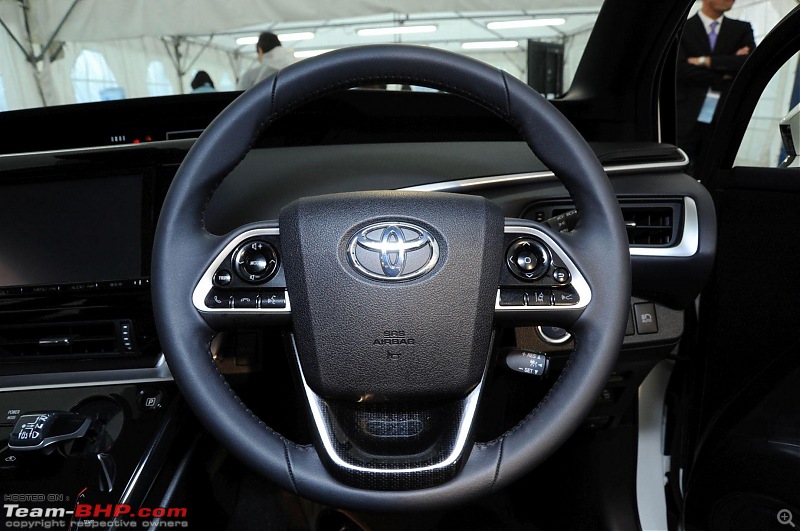
The MID isn't intrusive and does its job well:

The driver's foot well is clean and simple. A dead pedal to rest your foot, and just above is the parking brake:
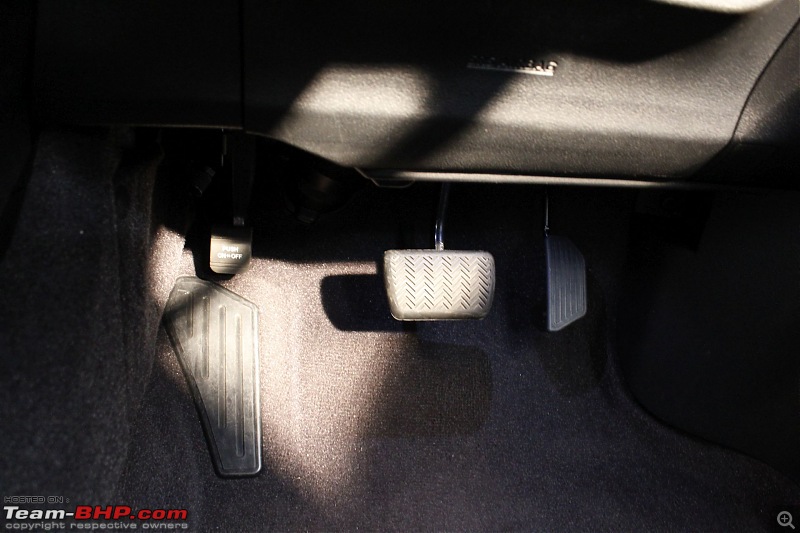
There is a DC power out plug in the boot. This switch controls it:
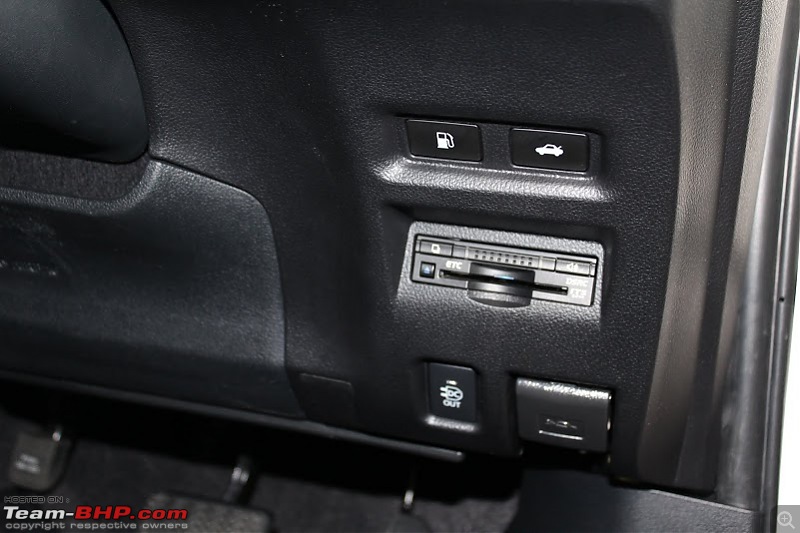
Between the front seats are the driver controls...

...the controls are easy to comprehend. But the shiny surface is going to be a pain to keep clean. You can see the effects of a hasty clean up job:
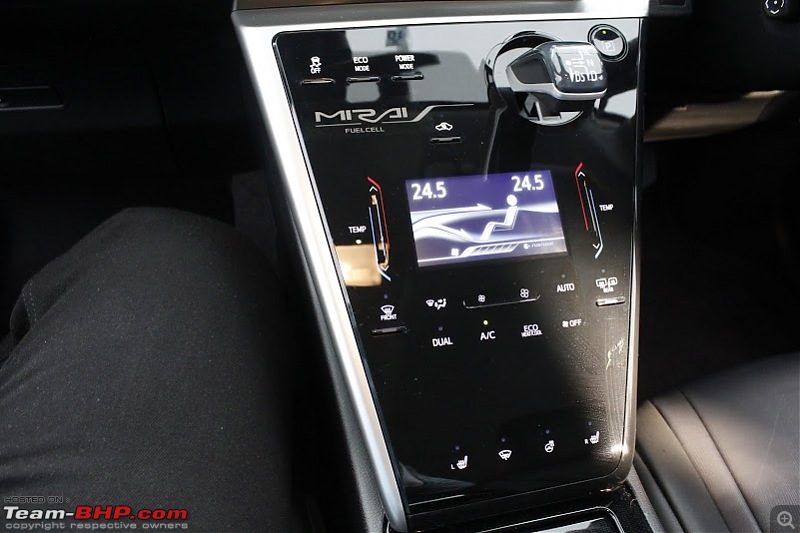
The navigation system will help you find the nearest hydrogen filling station:

The design is quite catchy & unique. Toyota wants to keep this car 'different':
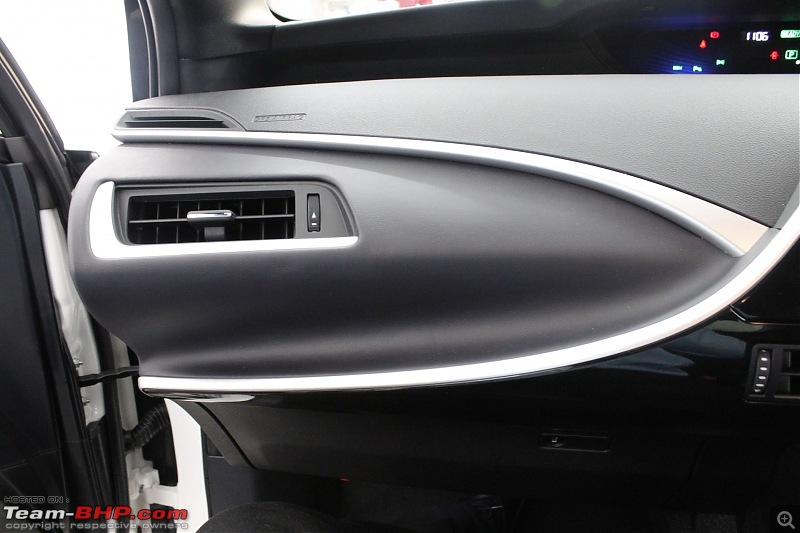
The Mirai can seat four adults....comfortably. All seats are broad and envelop the passenger:
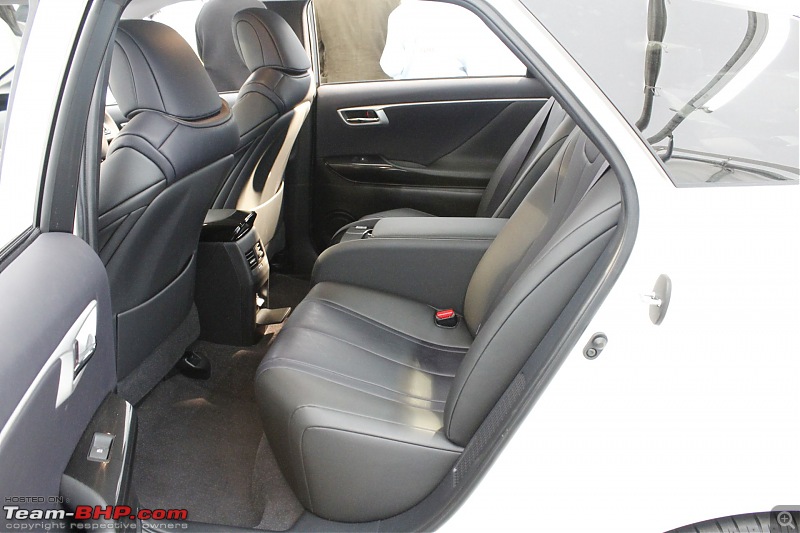
The panel under the central console opens to allow access to power points. This car runs by generating electricity:
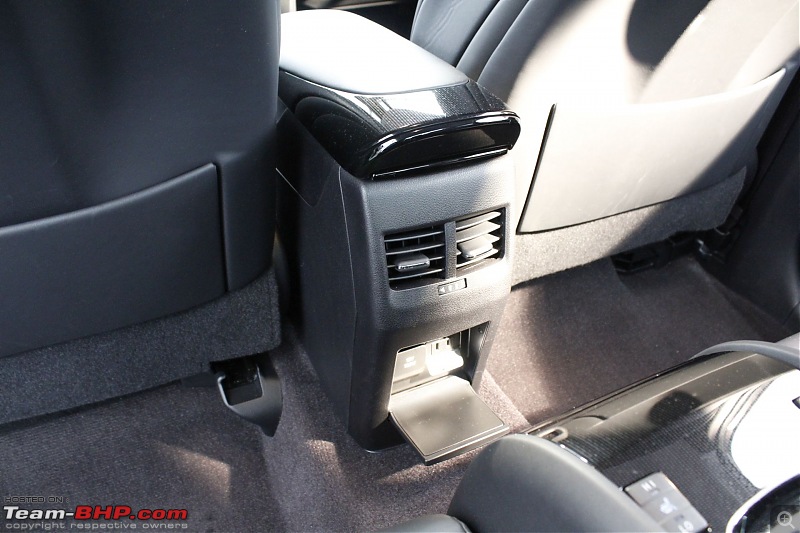
You can easily plug in your hair dryer, toaster or more likely...a laptop charger :):
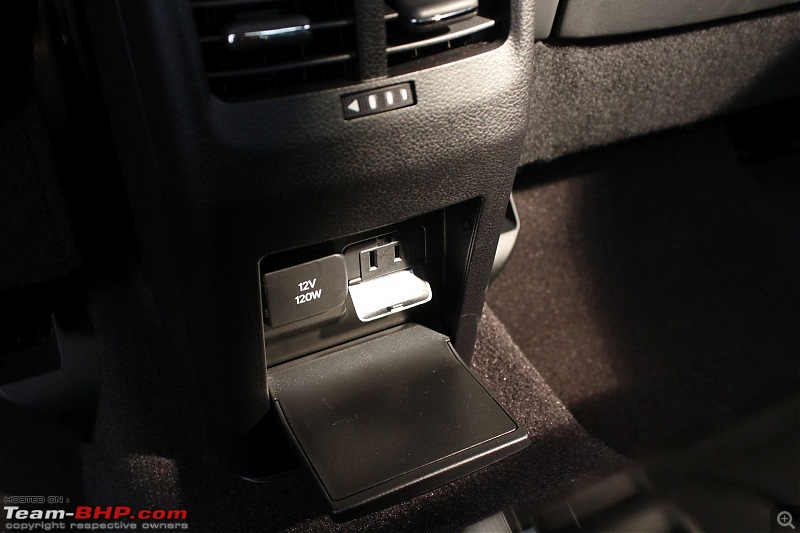
The boot has a capacity of 371 liters. Nothing extraordinary:
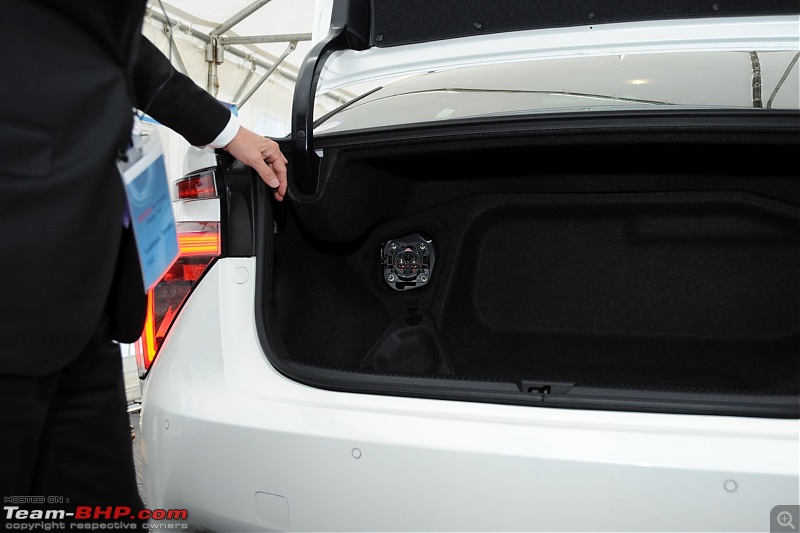
Look closer and you'll find this DC out connector and a plug point. As per Toyota, it can power a house for up to 5 days on 5 kilos of hydrogen. Can help if there is a natural calamity like a tornado or an earthquake. But more likely, if someone goes camping and wants all the creature comforts:

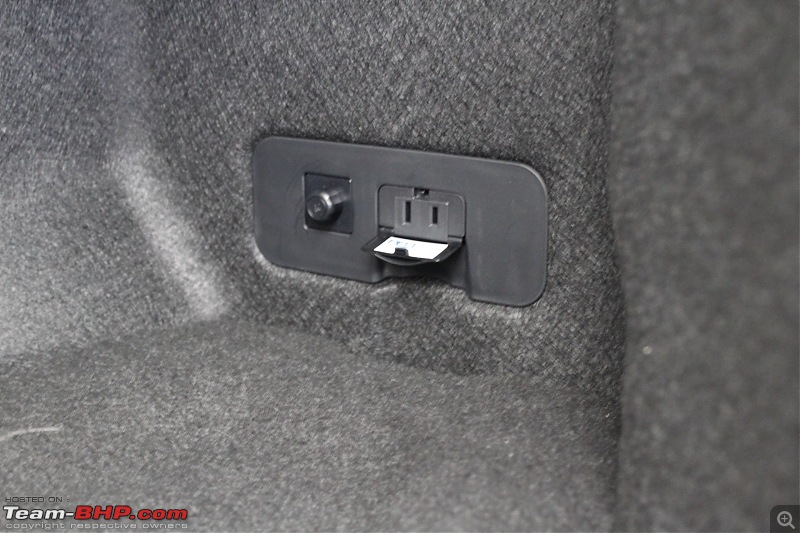
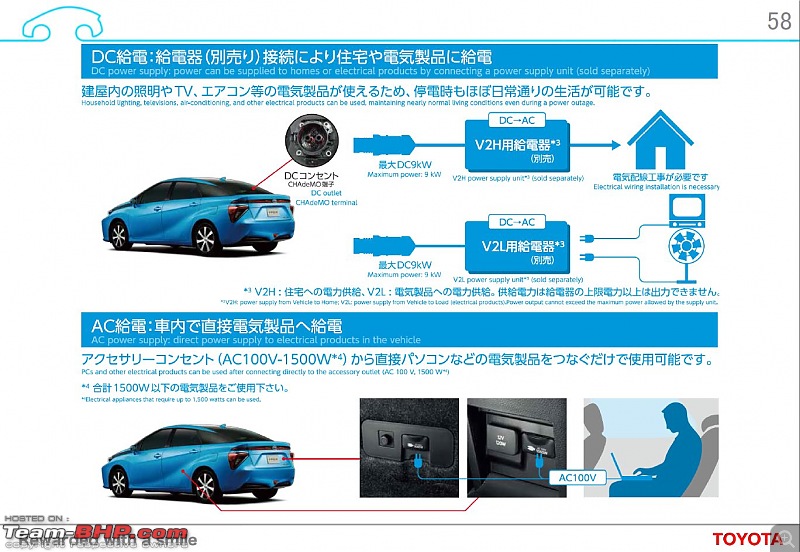
The only by-product of this fuel cell car is water. While a lot of it gets discharged while driving, there is still a small tank that retains some of it. A button marked H2O (under the steering) will drain this water. The manual drain is important for people who park in a cellar:
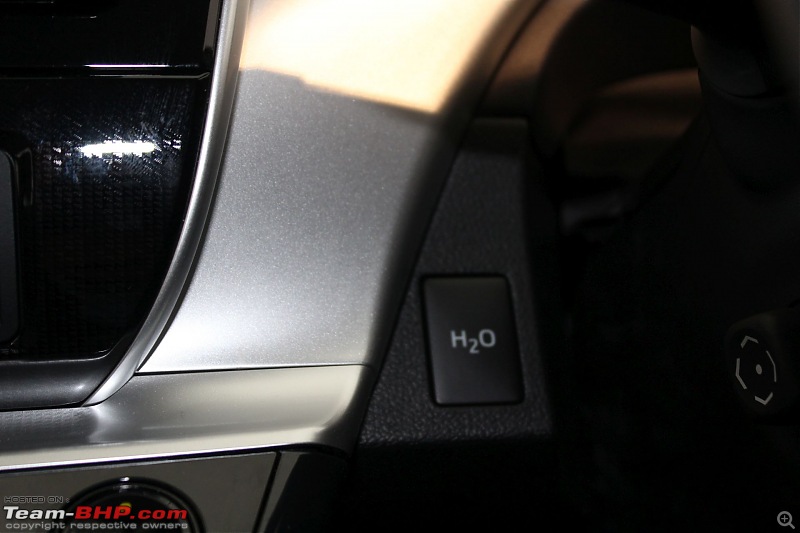
Do note that this is pure H2O! While it's absolutely safe to drink, don't. The pipes and tank cannot be cleaned and could have microbial contamination. That said, it is perfectly safe for the environment and makes for an environment friendly discharge:
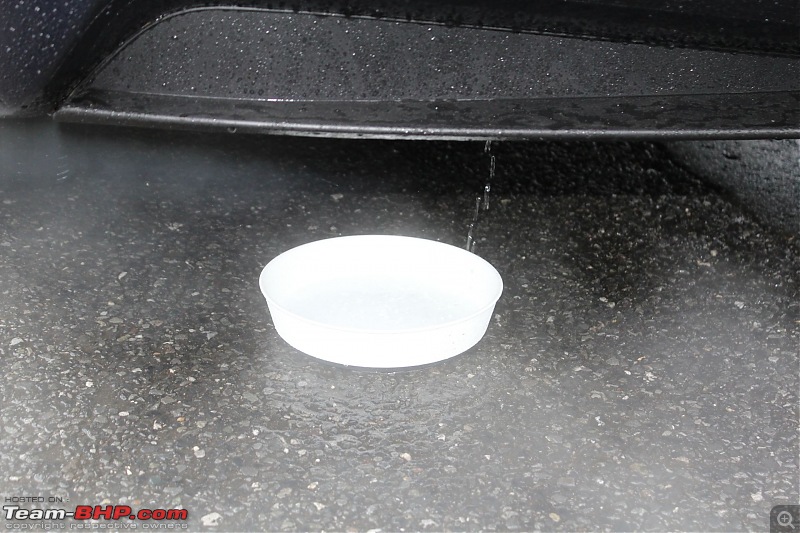
Electric engines give maximum torque right from the word 'go' (i.e. 0 rpm). An acceleration figure of sub-10 seconds to the 100 makes this an adequate daily commuter:
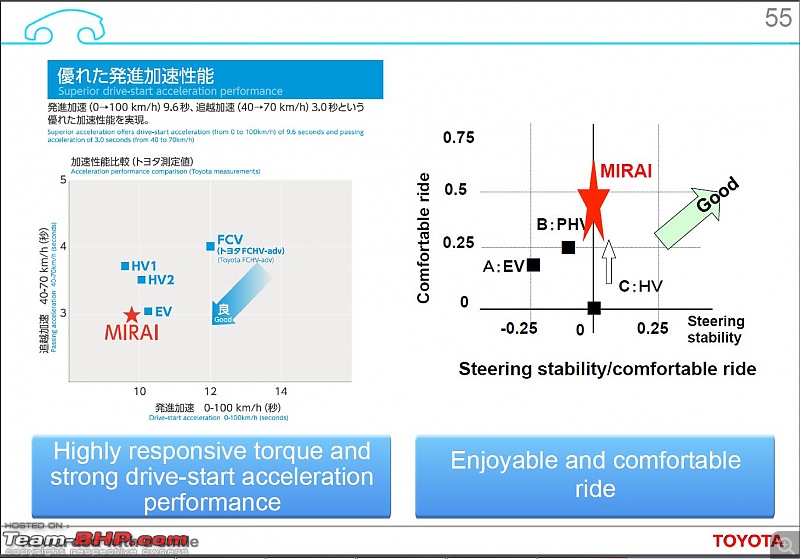
Slot into 'D' and press the accelerator. As simple as that:
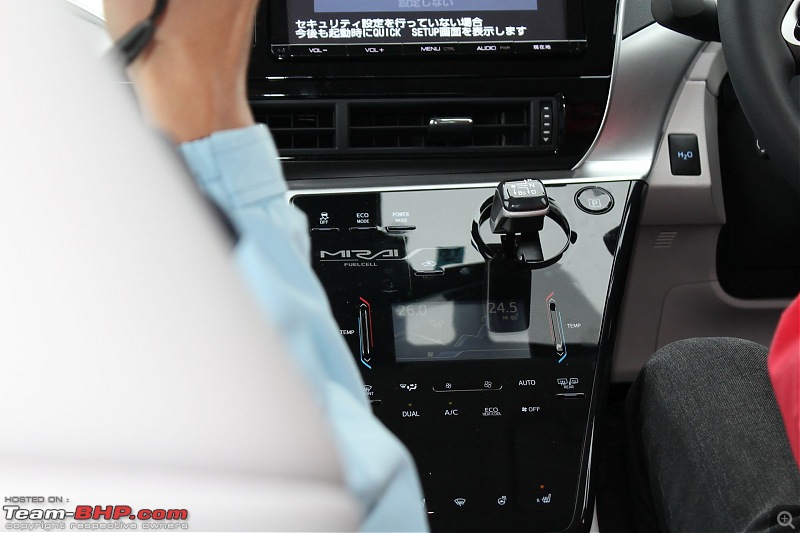
The actual drive was on a rainy & windy day in a parking lot. We first had a brief session with engineers from Toyota Motors. The parking lot was wet; they'd put in a couple of cones and marked a route with steep curves. The leather warmed seats provided a good level of comfort. The shiny center console, however, feels out of place in an otherwise subtle setup. Start the engine up and the silence is eerie. Open the bonnet and the humming sound is similar to outdoor units of air-conditioners. It's an electric engine, hence max torque is made at 0 rpm. The engine feels responsive and the 0-100 dash takes under 10 seconds. Straight line acceleration is good, the Mirai pulls very well. The driving experience is much like a regular car. I took one of the turns a bit too fast and noticed that body roll was well-controlled. Saw the traction control kick in to prevent a slide:

The first FCV is a sedan for a specific reason. Sedans are the best way to popularize a concept, and also highlight the 'fun to drive' element. The low center of gravity helps:

The body is a lot more rigid than its petrol-engined peers:

Manufactured at: The Motomachi Plant
Start of Sales: December 15, 2014
Sales Channels: "Toyota" and "Toyopet" dealerships
Sales Target: Approximately 400 units in Japan by the end of 2015
Retail Price: 7,236,000 yen (approx Rs. 37 lakh)


Standard safety tech:
- Pre-Collision System (with millimeter-wave radar) helps prevent collisions, or reduces collision damage via alerts & brake control if a high likelihood of collision is detected
- Lane Departure Alert System uses a camera to detect white or yellow lane markings, and alerts the driver when the vehicle is about to deviate from its lane
- Drive-Start Control limits sudden starts or acceleration during gearshift operation
- A Blind Spot Monitor uses a radar to detect vehicles in adjacent lanes
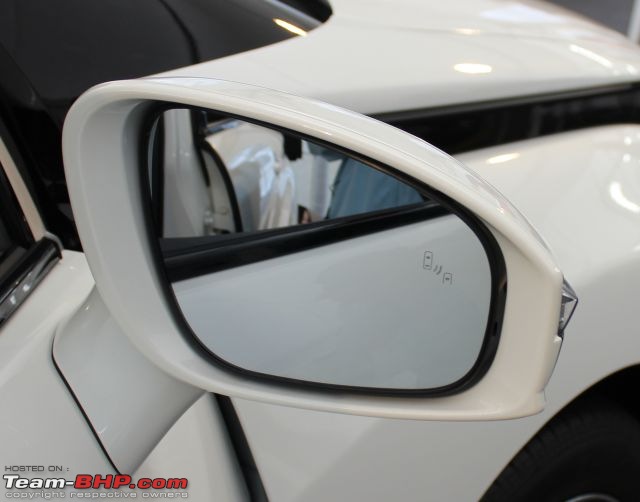
Toyota will release an app called "Pocket Mirai". It'll display information and current operational status of hydrogen stations nationwide, the vehicle's remaining hydrogen fuel, possible cruising distance and possible external power supply time. It also includes a hydrogen refuelling record function.
After a decade into the 21st century, the focus is shifting from making cars safer not just for passengers, but everyone outside as well. While the early 1990s saw rapid developments in airbags and driving controls like ABS, ESC etc., we're now witnessing big developments in 'active safety systems' from a host of manufacturers. 'Active safety systems' help prevent the accident in the first place.
The following statistic shared by Toyota clearly shows the trend in road fatalities. 3 out of 4 fatalities were suffered by people outside the protective car shell.
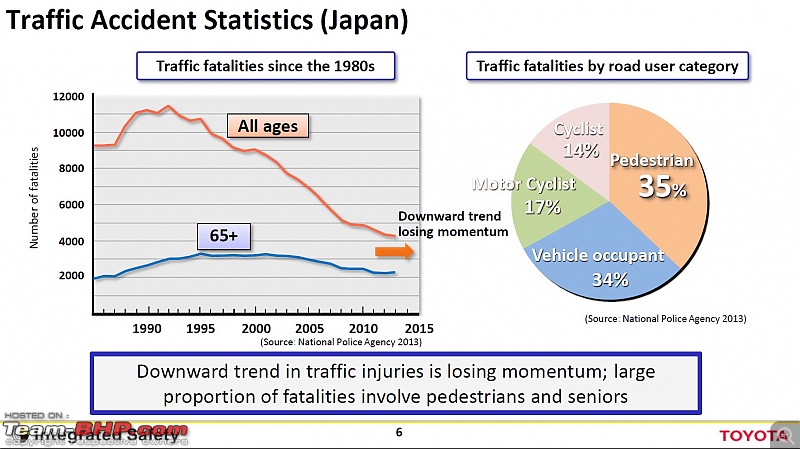
Lets take a look at some of Toyota's safety tech.
Parking!
The least glamorous part of driving. Sometimes, the space available is too little. Sometimes you come back and find the adjacent car parked at a very awkward angle. Frankly, not many enjoy parking a car or removing it from our crowded city roads. Then, we have the danger of little kids or animals sitting in a blind spot. Some of these accidents have been fatal for toddlers and I am petrified at this scenario. Parking lot accidents cause scratches and dents. Then there is another type of an accident - a driver assumes he put the car in reverse but instead slotted it into drive. Looks behind, slams accelerator and the car climbs the front kerb. These kind of accidents are not exactly rare and cause damage to both property and pedestrians.
Toyota has come up with some simple ways to make parking safer. There is a sonar based system that works along with the car's brakes. If it encounters an obstacle in the car's path, it gives an audible warning. If ignored, it slams the brakes and brings the car to a halt. If the driver wants, then the Intelligent Parking Assist can step in and take over the steering as well. The driver simply presses a button to select the parking spot from the navigation display and the car will steer itself. It will align itself on its own and the driver has to only provide the throttle input. If the driver accelerates too fast, then the system will step in and prevent a collision.
https://www.youtube.com/watch?v=BGd38676nF0
When exiting a parking lot, the driver has to deal with multiple blind spots. It is difficult to see what is immediately behind the rear or under the ORVMs. At night or during heavy rainfall, things become worse. To deal with this, Toyota has this 4 camera setup:
Front camera, just below the emblem:
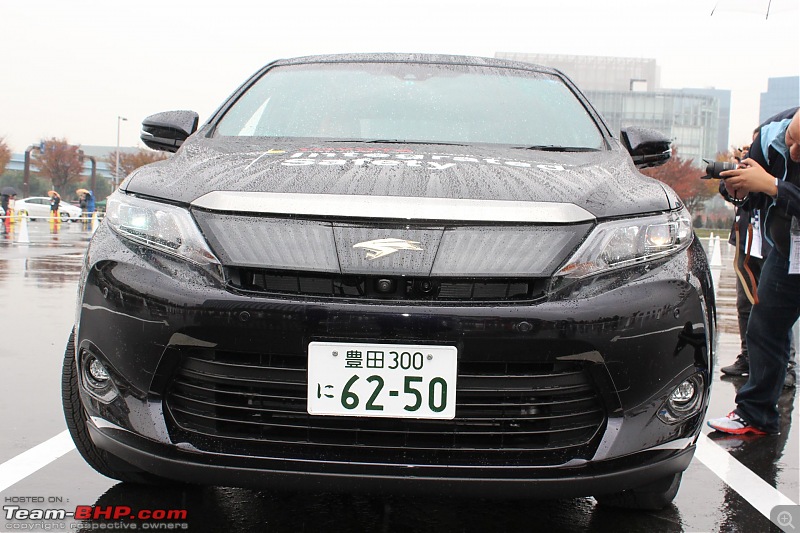
A close up:
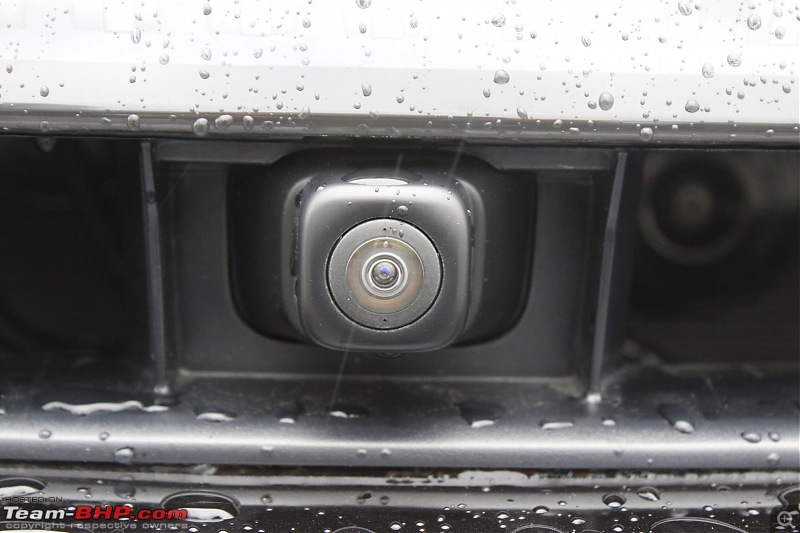
Rear camera:

ORVM camera:
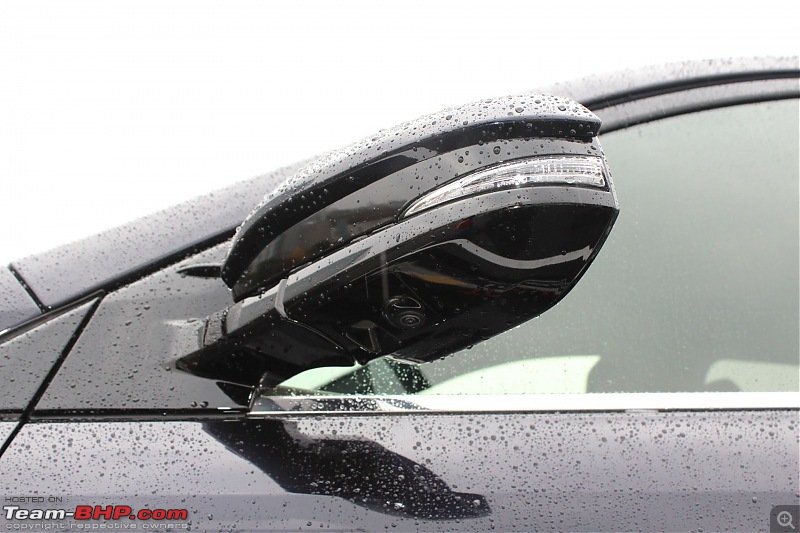
A close up:
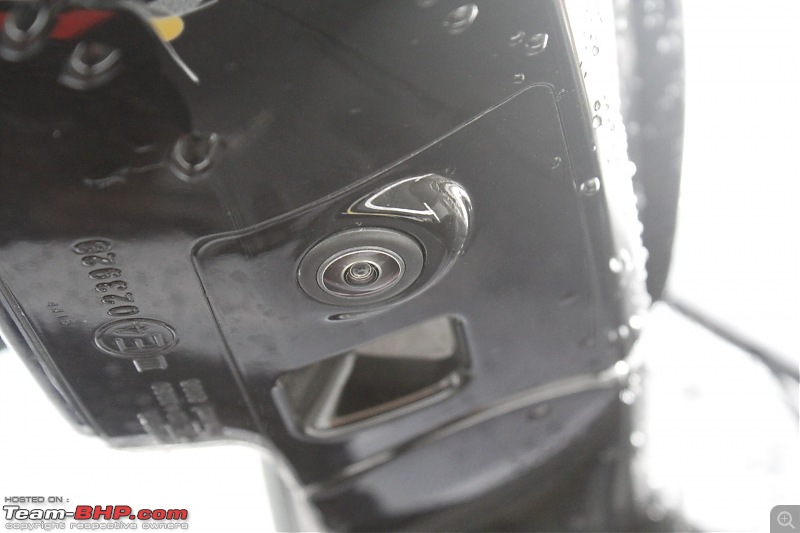
These four cameras create a virtual image of the immediate surroundings. This view can be in either the 'moving view' or the 'see through view'. The 'see through view' is remarkable; it is from the driver's perspective as if the car had become transparent.
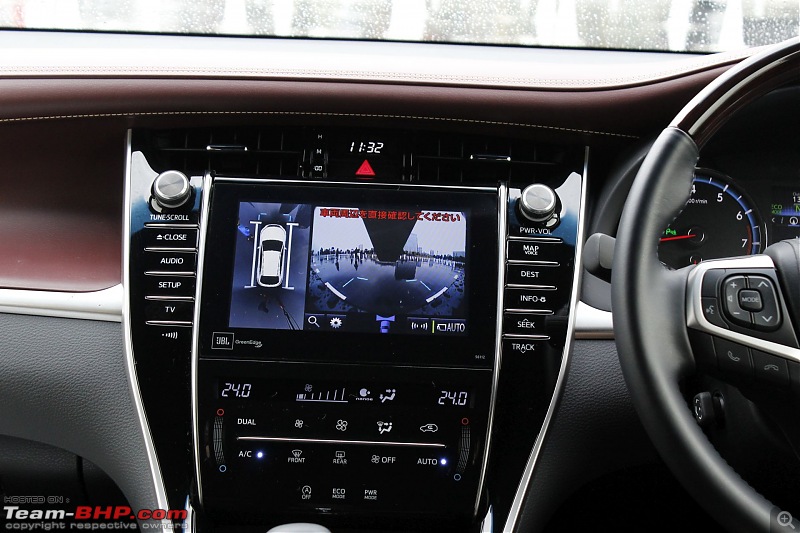
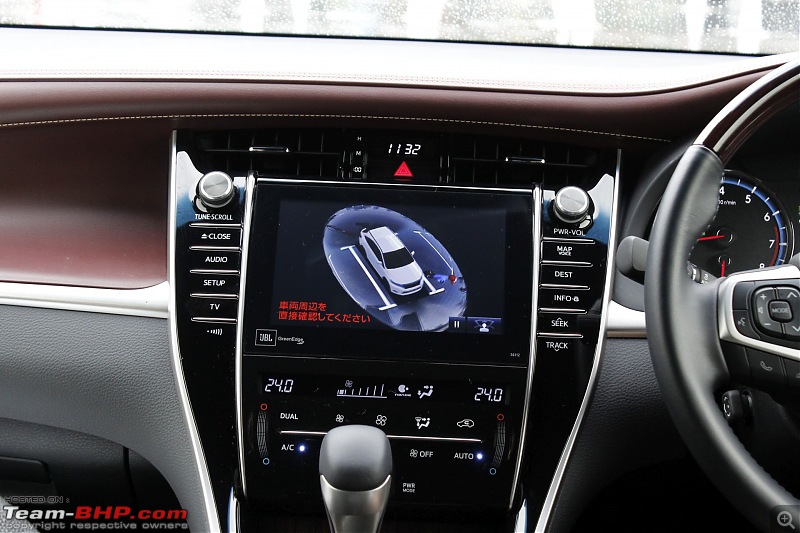

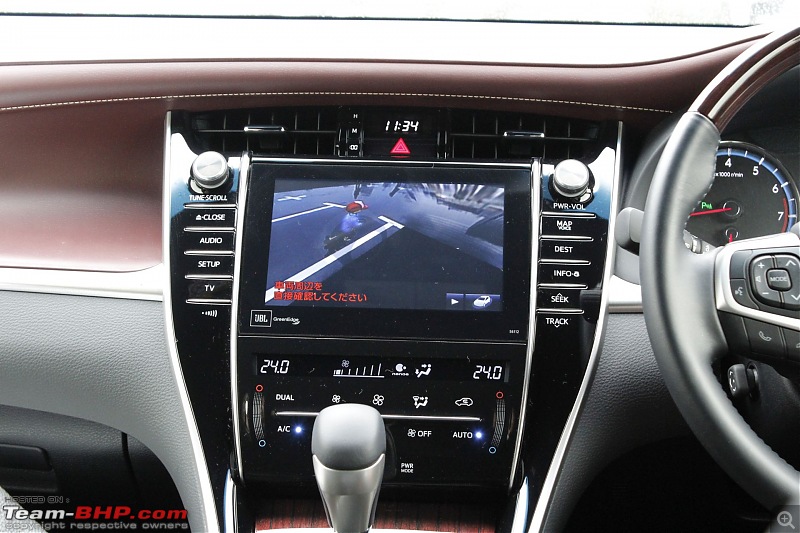
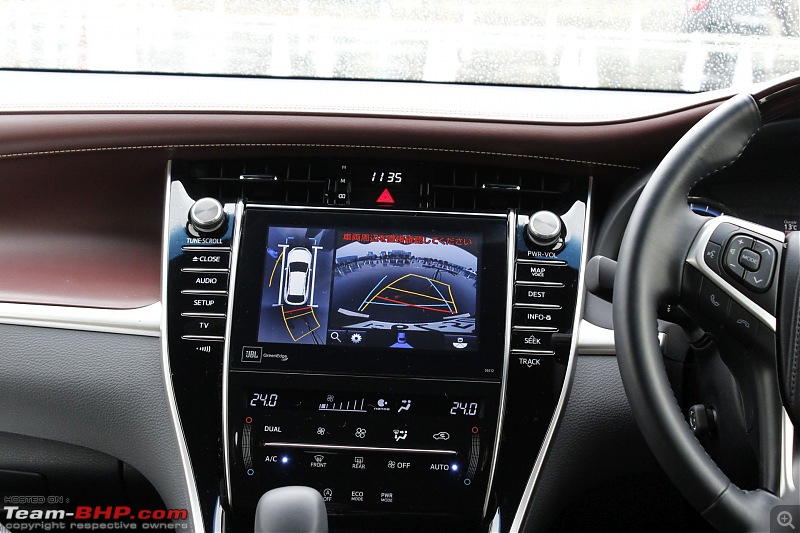 https://www.youtube.com/watch?v=s4bP9yC3QCo
https://www.youtube.com/watch?v=s4bP9yC3QCo
The biggest problem faced by drivers at night isn't the lack of lighting, but instead, the lack of a focused illumination where it matters. Traditional headlights are fixed. They do not automatically change the coverage in terms of width and throw. One common and cheaper option is to add additional auxiliary lights, but focusing issues will render blind anyone who looks at your car.
A lot of car companies are experimenting and developing LED lights to have specific areas illuminated. Toyota has also come up with their own LED Array Adaptive High Beam System:
https://www.youtube.com/watch?v=RQPTeUnuIGY
This LED Array uses a camera and the car's own speed to identify the throw of the lights. It switches into low beam as soon as it encounters traffic from the opposite side. But it does this in a very smart manner. Only the area where the opposite vehicle is gets into low beam. The rest of the road is still lit up with high beam. It also has a sensor in the steering, so it provides more illumination in the direction of a turn. This helps to spot any obstruction that may be there. I am sure most of us who drive in India have come across parked trucks or stones right in the middle of a lane at the end of a turn.
Right-turn Collision Caution
Have you ever patiently waited for the signal to give you a green light, turned quickly and spotted a pedestrian on the zebra crossing at the last minute? The pedestrian was completely out of your line of sight? The pedestrian may have been standing there looking at his mobile phone or listening to music. These kind of accidents do happen and are very common, especially at busy intersections.
This information can now be displayed on the MID. It's achieved by having a smart post that overlooks the signal that will transmit wireless information about the obstruction on the road. So vehicles, pedestrians etc. that are hidden from your line of sight are no longer surprises.
https://www.youtube.com/watch?v=lNDillFkrwc Emergency Vehicle Notification
You are driving along and suddenly hear the loud sirens of an emergency vehicle. It could be a fire truck or an ambulance. With the loud sirens echoing all over the road, you're confused where exactly the emergency vehicle is. That is no longer a problem. The emergency vehicle is transmitting its location and your car will tell you just how far away and in which direction it is.
https://www.youtube.com/watch?v=brKDTVbxKD0 Communicating Radar Cruise Control
A simple cruise control system allows you to set a predetermined speed and relax. The car will maintain that speed, but it cannot react to changes in traffic conditions. There are two developments that help:
Radar Cruise Control: A forward-facing millimeter-wave radar tracks the road ahead. It automatically slows down the car if the vehicle ahead stops. It also adjusts when the vehicle in front leaves the lane or a new one joins it. The system is able to calculate a safe distance and maintain that. This system does not depend on other vehicles; it is completely independent of them.
Communicating Radar Cruise Control: This system uses a proprietary standard that allows cars to communicate with each other. When cars equipped with this system are driving in a line on a highway, they share information on lane changes, speed, acceleration and deceleration. Cars are thus able to react to changes together; this helps maintaining smoother acceleration and deceleration.
https://www.youtube.com/watch?v=WkRGATiyruE
Pre-Collision System (PCS): PCS uses a camera & laser radar to detect objects ahead of the vehicle, and when there is a possibility of collision, it prompts the driver to brake with an audio + visual alert. When the driver notices the hazard and brakes, the system provides additional braking force. If the driver fails to brake in time, the system automatically applies the brakes to prevent or mitigate the collision. The operational range of PCS covers speeds at which at least 80% of rear-end collisions occur (i.e. relative speeds of between approximately 10 - 80 km/h).
Lane Departure Alert (LDA): LDA uses a camera to detect white and yellow lane markings. If the vehicle starts to deviate from the lane, LDA alerts the driver with an audio & visual alert.
Automatic High Beam (AHB): AHB helps ensure forward visibility during night driving. It uses a camera to detect the headlights of oncoming vehicles and the tail lights of vehicles ahead, and then automatically switches between high beams and low beams so as not to dazzle other drivers.
I had a live demonstration of the PCS! We drove the car straight towards the dummy car parked in our lane. We were instructed
not to touch the brake pedal. As we got closer, a loud buzzer started sounding. It got really loud and continuous, before the car stopped by itself. It was a harsh braking experience, but the dummy and our car didn't make contact.


Additionally, we got a live demonstration of the Pre-Collision System with 'pedestrian detection'. A dummy model was radio controlled. It was timed to get into the lane as the car approached. Unfortunately, given the many test runs and extremely bad weather conditions, by the time I did the demo run, the dummy was no longer moving up and down the lane. They just left it in the middle :).
As the dummy comes into the line of sight for the driver, the car identifies a pedestrian and alerts the driver. If the driver does not take corrective action, the car would stop itself.
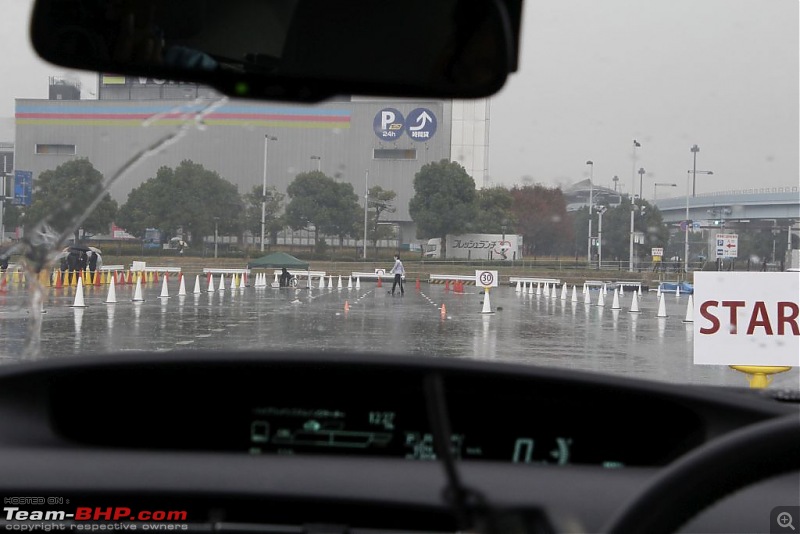

 https://www.youtube.com/watch?v=48Zi5NRFJeU Disclaimer : Toyota invited Team-BHP for the Mirai preview. They covered all the travel expenses for this driving event.
https://www.youtube.com/watch?v=48Zi5NRFJeU Disclaimer : Toyota invited Team-BHP for the Mirai preview. They covered all the travel expenses for this driving event.
Thread moved from the Assembly Line to the International Scene. Thanks for sharing!
Hmmm. It still needs refuelling stations, so the initial target market is going to be pretty closed loop. Would there be a version which could just run off distilled water?
Dependence on fossil fuels is reducing. Great for the environment and also for the existing cars which would enjoy lower fuel rates.
It looks like slowly the car will do everything for you. While safe and stress free, it will make driving a car a whwholly different, and probably boring, experience.
Sure this is an interesting technology. Any alternative to fossil fuels is welcome.
I'm intrigued by the fact that the car's generating electricity from hydrogen instead of burning it as a fuel more like the ICEs that the regular cars use, that would have been a straighter way to use a fuel, eh?
If my understanding is right, it is basically a setup that generates power by consuming a fuel (first part) and that power in turn powers up a motor(second part).
This opens up an endless possibilities beyond the world of automobiles. So, we have a portable power generator that is fully mobile and eco friendly which can be used in more ways than one can imagine right now!
Good to hear about companies being serious about alternate technology.
If only the government subsidizes alternate technology we could drastically reduce the dependance on fossil fuels and encourage people to shift.
Quote:
Originally Posted by honeybee
(Post 3601301)
Hmmm. It still needs refuelling stations, so the initial target market is going to be pretty closed loop. Would there be a version which could just run off distilled water?
Dependence on fossil fuels is reducing. Great for the environment and also for the existing cars which would enjoy lower fuel rates.
It looks like slowly the car will do everything for you. While safe and stress free, it will make driving a car a whwholly different, and probably boring, experience.
|
Initially the availability is going to be low. But hopefully things will change as fossil fuels are limited and there is only so much that we can mine.
I don't think there is any version that will be running on distilled water.
Quote:
Originally Posted by VintageSree
(Post 3601347)
Sure this is an interesting technology. Any alternative to fossil fuels is welcome.
I'm intrigued by the fact that the car's generating electricity from hydrogen instead of burning it as a fuel more like the ICEs that the regular cars use, that would have been a straighter way to use a fuel, eh?
|
This is supposed to be cleaner.
Quote:
If my understanding is right, it is basically a setup that generates power by consuming a fuel (first part) and that power in turn powers up a motor(second part).
|
Spot on. :thumbs up
Quote:
This opens up an endless possibilities beyond the world of automobiles. So, we have a portable power generator that is fully mobile and eco friendly which can be used in more ways than one can imagine right now!
|
Very true. There are a lot of investments in these alternate sources of energy for different applications.
| All times are GMT +5.5. The time now is 08:37. | |










































































